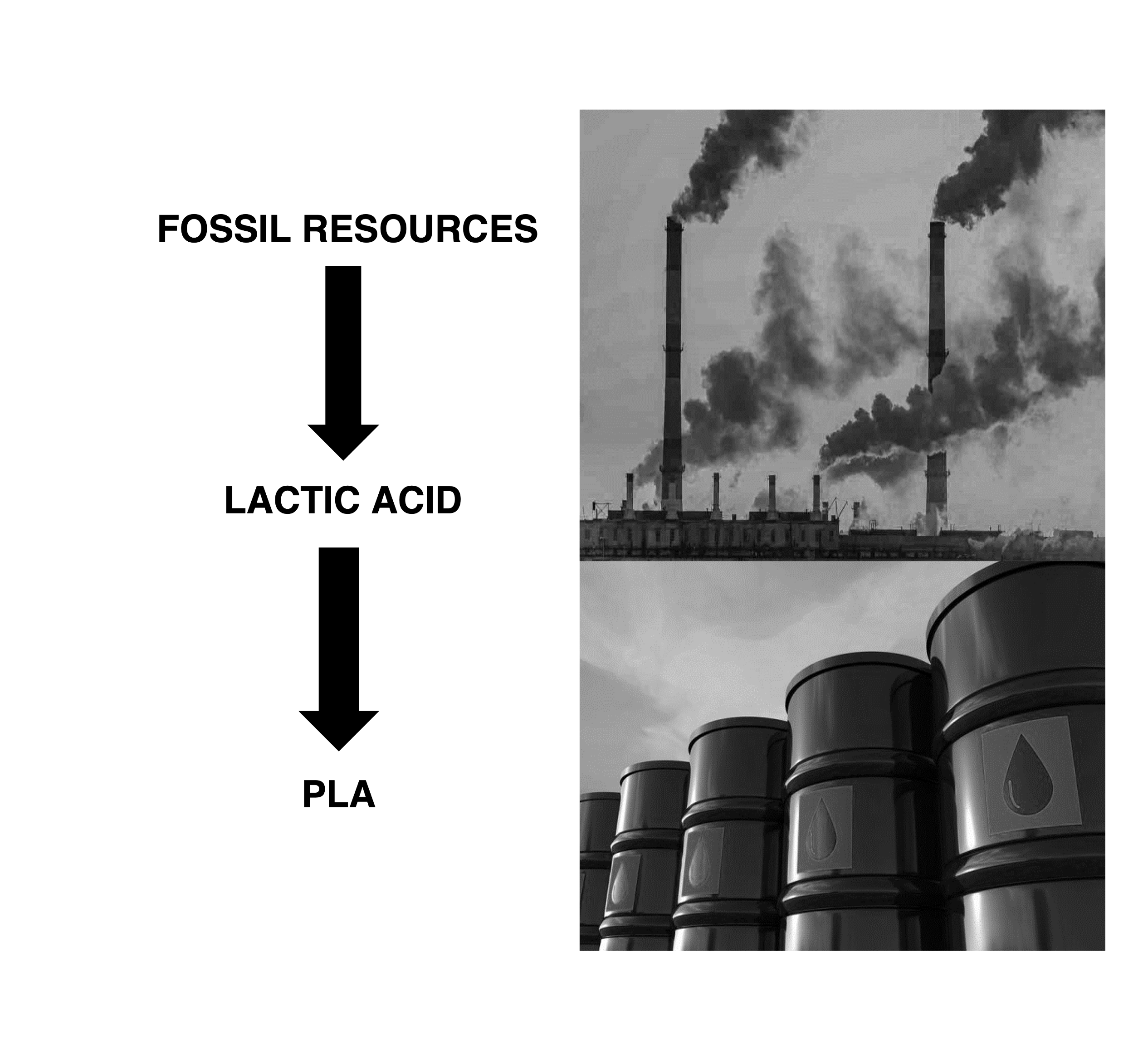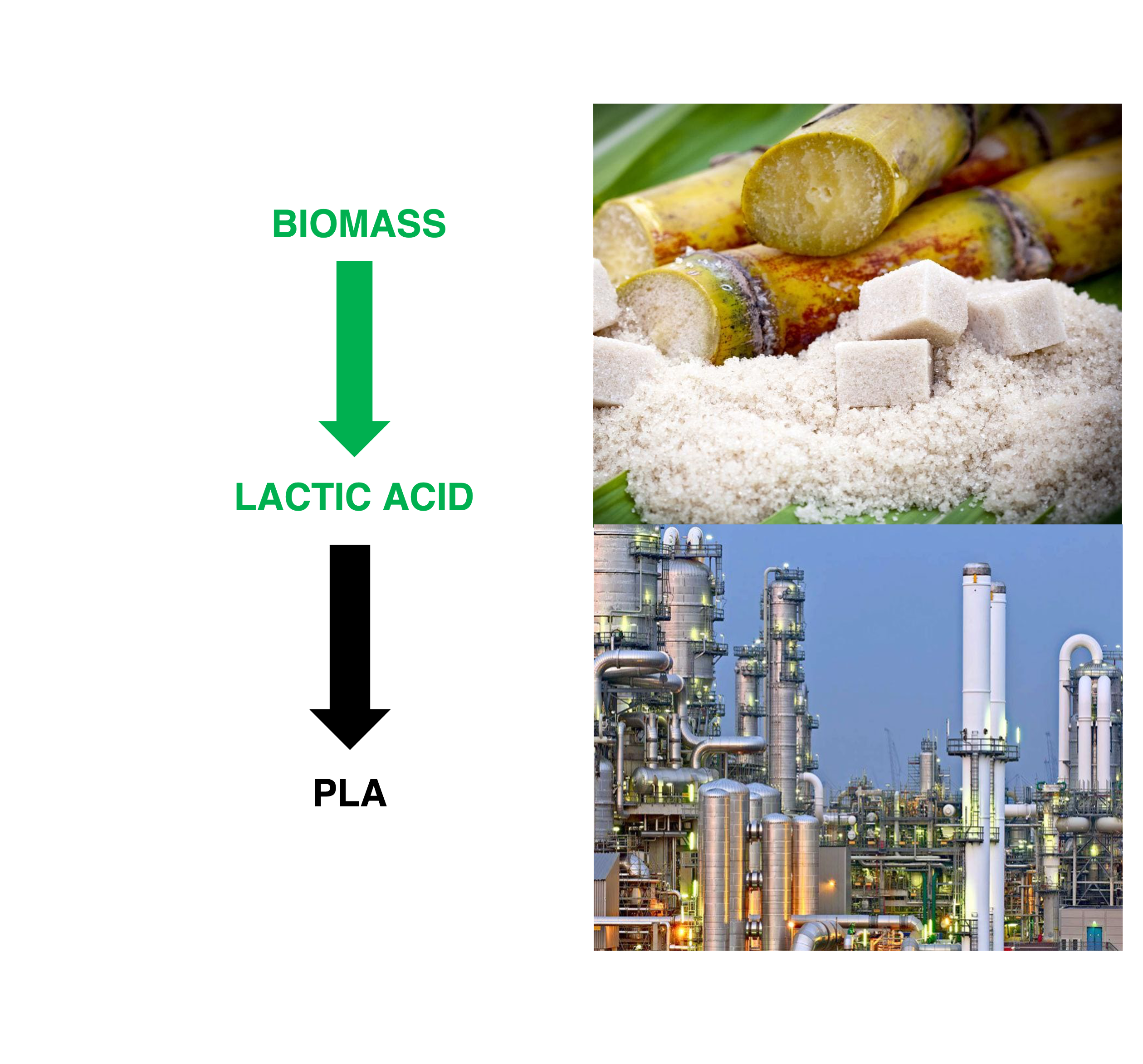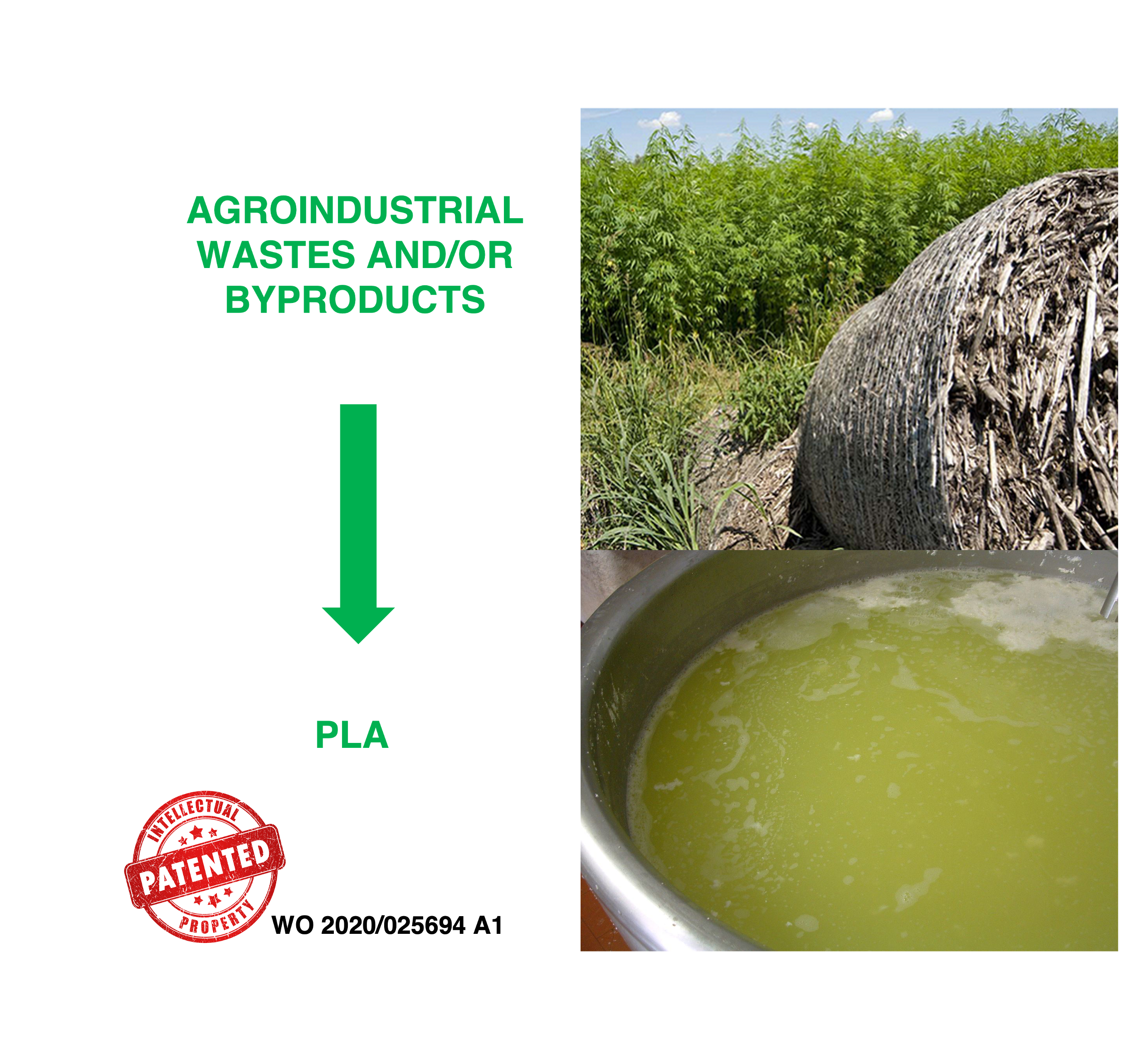Galatea Bio Tech's current goal is the production of PLA-based (polylactic acid) bioplastics that are
fully biodegradable and compostable, as well as other bioplastics that are 100% biodegradable and 100% compostable.
Our challenge is the development of new polymers with the same characteristics as materials already in use
but sustainable and biocompatible at the same time.
In the past, lactic acid, the monomer of PLA, was mainly produced by chemical synthesis from fossil resources. Chemical synthesis always resulted in a racemic mixture, which is one of the major disadvantages of this type of production, since the optical purity of the lactic acid is an essential factor in determining the final physical properties of PLA.
PLA was finally obtained by an industrial chemical process of polycondensation of lactic acid and/or by Ring-Opening Polymerisation (ROP) of lactide.

In today's industrial processes, lactic acid is produced by fermentation using mainly Lactobacillus species.
Fermentative lactate production offers a great advantage in producing the optically pure forms of D- and L-lactic acid.
However, the resistance of these bacteria to low pH values generates mostly lactate instead of lactic acid which must be regenerated using chemical acids.
The transition from lactic acid to PLA still takes place via a chemical polycondensation step. The polymerisation technology has therefore not changed and remains an unsustainable step.

Our innovative approach involves sustainable production from organic waste or waste byproducts from the agro-food industry, an unavoiadable choice on the path to a circular bioeconomy.
ONE-STEP PRODUCTION
Our innovative patented biotechnological approach enables the simple and direct production of PLA directly within the yeast cell. Any chemical step, any step outside the microbial cell. Furthermore, our approach enables the production of D- and L- lactic acid isomers generating directly pure PLLA or pure PDLA polymers.
